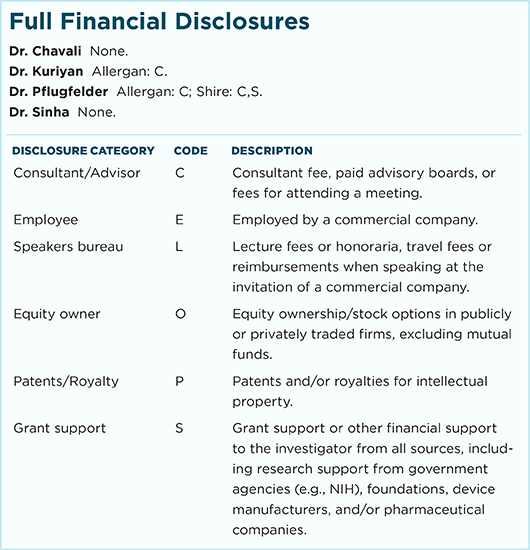Download PDF
An exhaustive analysis of the “POAGome”—542 genes associated with primary open-angle glaucoma (POAG)—has identified inflammation and cellular senescence as the 2 most likely initiators of the molecular mechanisms that ultimately damage the optic nerve in the disease.
A “theory of everything”? Although the University of Pennsylvania researchers focused their conclusion on POAG, they also found hints that these 2 broad pathological processes might constitute the underpinnings of a long-sought “theory of everything”—explaining the pathology not only of POAG but also of other types of glaucoma.1
“We used bioinformatics tools to look at glaucoma-related genes identified by published functional studies and genome-wide association studies, and this showed that most of these genes sing the same song,” said coauthor Venkata R.M. Chavali, PhD, assistant professor of ophthalmology at the Scheie Eye Institute in Philadelphia. “They funnel down into 2 important pathways that have never been reported to significantly influence POAG pathology.”
Inflammation and senescence pathways implicated. The researchers reported that the largest subset of POAG-related genes activate the cytokines transforming growth factor alpha (TGF-α) and tumor necrosis factor beta (TNF-β), molecular growth factors linked to inflammation and senescence pathways. They also found possible involvement of genes related to a third senescence-related molecule, DNA transcription factor NFκB, which if dysregulated can initiate a pathway leading to apoptosis.
Applying the findings. The results of the study are informing the genetic risk analyses that Scheie scientists are conducting in a 5-year, 7,000-patient study to examine glaucoma risk among African Americans, Dr. Chavali said. Among other goals, the project scientists hope to correlate genes, ancestral mix, and glaucoma risk in the POAG patients and controls, he said.
“In our area, we see so many African American patients who develop glaucoma 10 years younger than white patients and have 3 times the risk,” Dr. Chavali said. “Yet African Americans are underrepresented in the genetic databases on glaucoma.”
—Linda Roach
___________________________
1 Danford ID et al. Prog Retin Eye Res. Published online Feb. 20, 2017. doi:10.1016/j.preteyeres.2017.02.001.
___________________________
Relevant financial disclosures—Dr. Chavali: None.
For full disclosures and disclosure key, see below.

More from this month’s News in Review